The young farmer who runs beef cattle in a 36,000ha forest
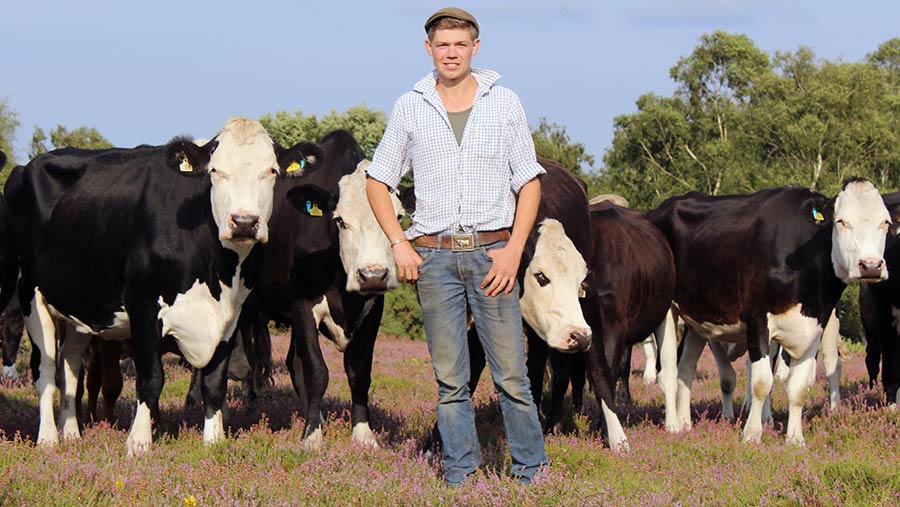 Tom Hordle with his New Forest cattle © Oli Hill/RBI
Tom Hordle with his New Forest cattle © Oli Hill/RBI Ask an enterprising young farmer if they fancy farming an area roughly the size of the Isle of Wight and they would probably fall over in shock.
But that’s precisely what 28-year-old new entrant Tom Hordle is doing after he landed a rare and exciting opportunity to farm in the wilds of the New Forest.
He’s been building his own beef enterprise since he was a teenager and today runs a suckler herd that roams free in the National Park, grazing a buffet of grass, heather, gorse and other vegetation that grows in abundance.
See also: Video: How to train a sheepdog and pick the best breed
Based on the western fringe of the forest, a few miles north of Ringwood in Hampshire, Tom is making use of what’s known as commoners’ rights.
The New Forest is owned by the Crown Estate and run by the Forestry Commission, but anyone who has land in the local area has the right to graze livestock in the forest.
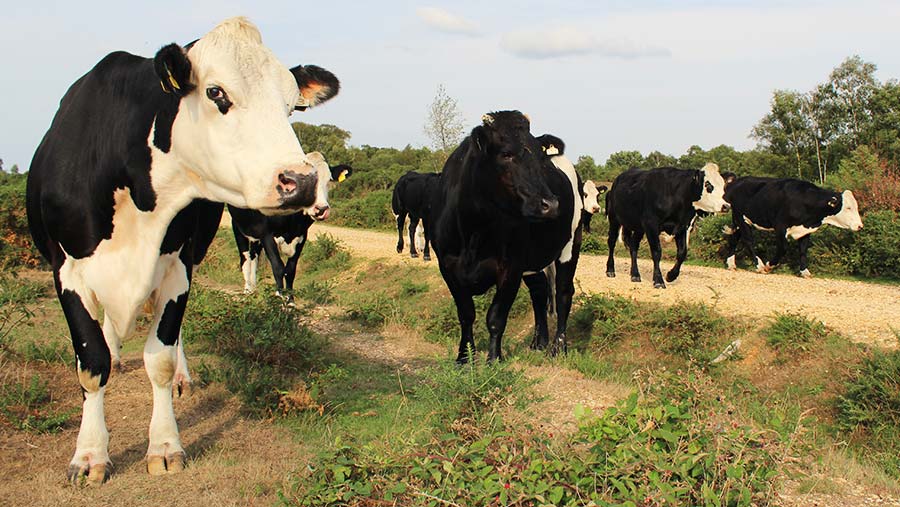
© Oli Hill/RBI
“The forest area is about 90,000 acres and I have free rein of all that without a headage limit,” Tom explains.
Unlike other common land areas, such as Dartmoor, commoners are not restricted as to the number of animals they are permitted to run in the New Forest all year round, making commoners’ rights in this neck of the woods unique.
With help from his partner and Devon farmer’s daughter Adele Colton, he grazes 70-head of mostly Hereford cross beef cattle year-round.
Tom has built up his herd by rearing day-old Hereford cross Friesian calves, which have become the foundation of his enterprise. Calves are sired by his pedigree Hereford bull to promote a docile temperament.
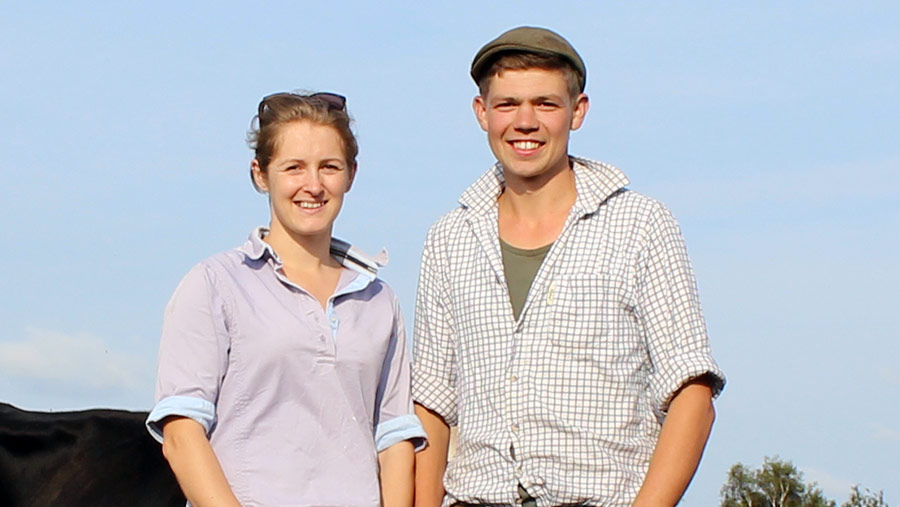
Tom Hordle with partner Adele Colton © Oli Hill/RBI
These cattle play a vital role in the New Forest, grazing and paring back the ancient heathland to stop it becoming too overgrown for the wildlife that thrives there.
Tom only brings his herd off of the National Park to run cows with the bull, for TB testing, or to give them silage during bleak winter nights.
They also need to be kept away from the common land in October as fallen acorns pose a deadly threat to cattle.
Commoners let pigs into the forest at this time of year to eat the acorns, making the area safe for other livestock to graze for the rest of the year.
See also: The girl who ditched a marketing career to be a sheep farmer
First steps
Having worked for a local farmer for a number of years, Tom got the chance to buy a small parcel of land, which allowed him to devote time to setting up a successful niche business of his own.
“When I was 10 years old I started helping an old farmer and commoner called Terry rear his calves. He bought me my first calf when I was 11 and that’s really how I got into farming,” he says.
The relationship between experienced commoner and ambitious young farmer flourished as Tom and Terry worked in an informal share farming arrangement.
Tom eventually took on more store cattle and managed to get enough cash together to buy the small clearing in a wooded area where he has been based for the past eight years. He used a Leader grant to partly fund the erection of his first cattle shed.
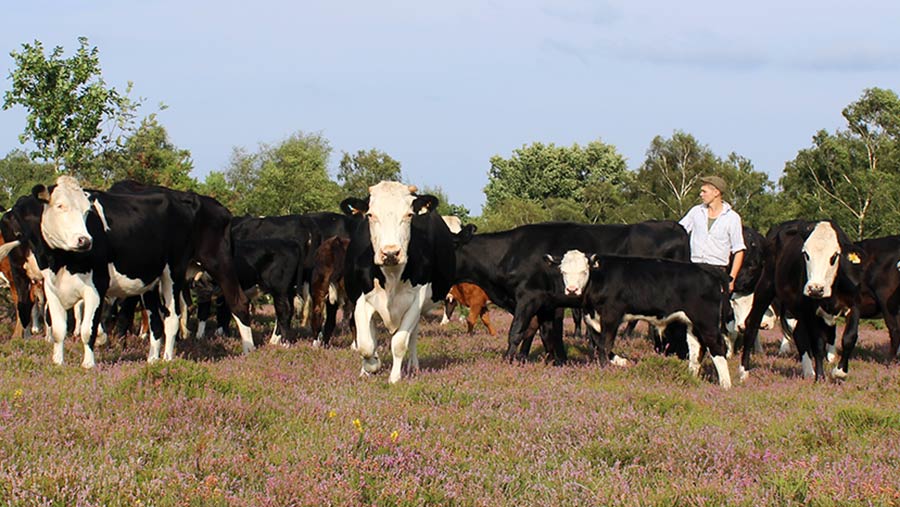
© Oli Hill/RBI
Being just 90 minutes’ drive from London means land prices range from £25,000 to £40,000/ha – way out of reach for most prospective new farmers. This is where Tom’s access to the common land comes in.
“Land around here is so expensive. The forest is great for me because it allows me to be a bigger farmer than I could be with just the small amount of land that I have.
“The cattle have a great life out in the forest and they help maintain the ecosystem. Without commoners’ livestock grazing the land it would just be a jungle.”
He says commoners need to become better at sharing with the public precisely what it is they do and how it benefits the environment, wildlife and anyone who comes to enjoy this special slice of British countryside.
“People don’t realise what we actually do by farming this common ground. A lot of the commoners here like to keep themselves very private, but it’s all become a bit aloof and the public understanding has been lost to an extent.
“We have species of plant and insect here that you won’t find anywhere else in the world. The biodiversity of this area is so important.”
Beef up for Brexit
Commoners get a portion of the support payments and cash from environmental schemes, but Tom says his business isn’t reliant on this money.
He’s part of a new breed of young farmer finding ways to thrive in agriculture even if the UK’s withdrawal from the European Union means payments are paired back, refocused or scrapped altogether.
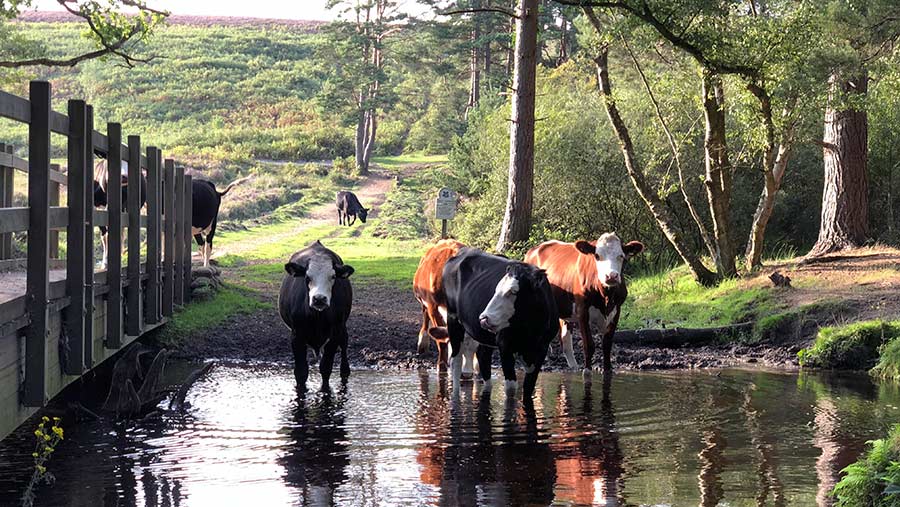
© Oli Hill/RBI
“I think that without the environmental schemes a lot of commoners would get out of farming. Many of them rely on these payments, but we’re trying to be efficient and resilient.
“We’ve got our niche market and we should be making the most of that. It’s a unique situation that I find myself in here and I want to tell the story of the forest beef.”
Tom’s New Forest beef has been a big hit among local establishments, with pubs and restaurants showing strong interest in taking whole carcasses.
“It’s so tasty because of the varied diet of grass, heather and gorse. Of course finishing isn’t a quick process, this isn’t a 15-month – they get there when they get there.”
Low and slow
Tom doesn’t feed any concentrate – it’s all part of the low-input way of farming he brands as “extensive, not intensive”.
“I really want people to appreciate the quality of life that these animals have in the forest and the quality of the beef that I’m producing. This area is a big holiday destination and the cows are basically on a permanent holiday.”
See also: Farmer-turned-race engineer gears up for Le Mans 24-hour race
Tom’s suckler herd redefines the meaning of free-range. He is usually found on horseback when roaming the common to check on his stock as it’s less disturbing for wildlife and ramblers than a quad bike.
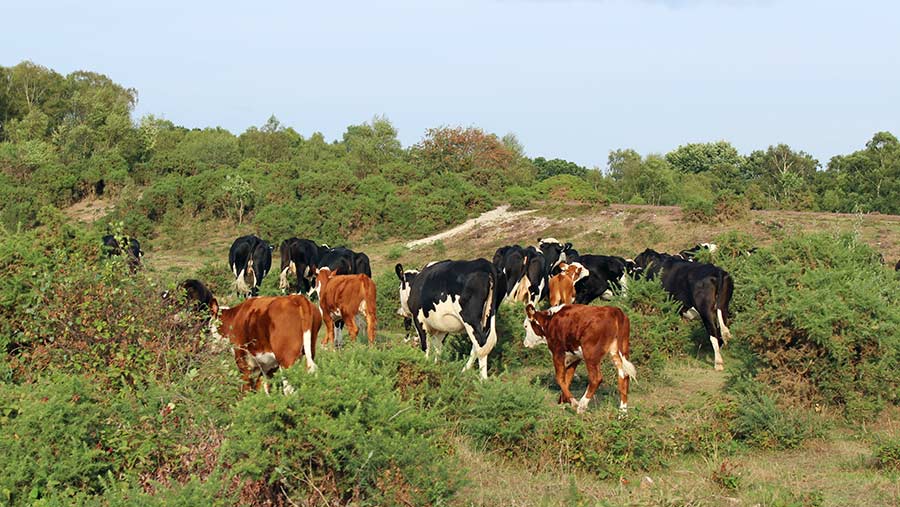
© Oli Hill/RBI
“The cattle move within about a 10-square-mile radius, so some days I’ll go out and be able to see them in five minutes and then other days you won’t find them at all. When that happens you just try again the next day. They seem to know where home is though.”
Interest in Tom’s enterprise has flourished in recent months, helped after he was featured in a Channel 4 television series about life in the New Forest.
He has now set up his own website and is capitalising on the beautiful landscape that surrounds him.
He uses Instagram and Twitter to promote what he does to the public, helping them to understand how his cattle benefit the New Forest’s unique environment and how grazing this land makes for great-tasting beef.
